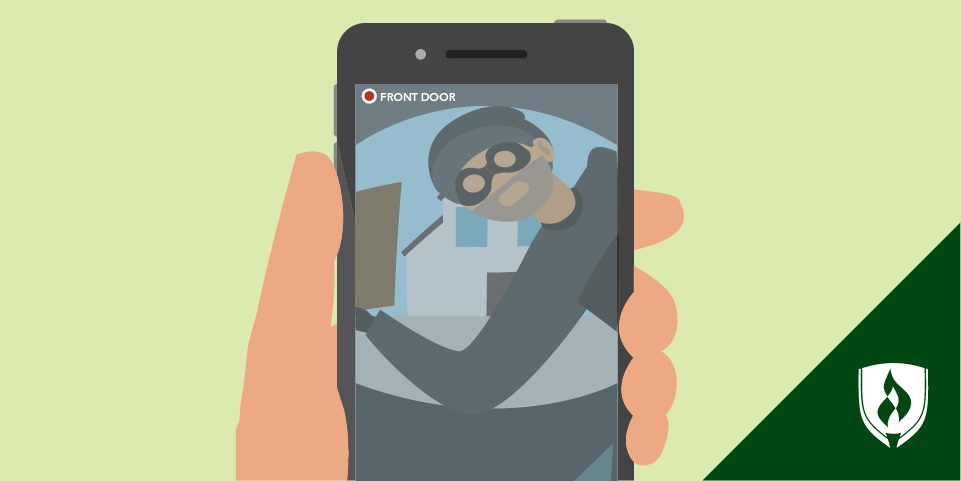How Accurate are Crime Shows on TV? Debunking 7 Common Myths
By Brianna Flavin on 02/07/2017

At any given moment of any day, crime dramas dominate television airwaves.
You’ve seen them. The first scene opens with a team of detectives—clad in gloves and biohazard suits—lifting fingerprints off of bed sheets, shower curtains and windowsills. After the commercial, those same detectives immediately match those prints to a seedy-looking suspect. By the end of the episode, the detectives have located said suspect and elicited a confession. And that’s a wrap—in 40 minutes flat.
Whether you prefer the cerebral forensic experience of CSI, the boots-in-the-streets grittiness of Law & Order: SVU, the sinister Robin Hood-style of Dexter or some combination thereof, you’ve seen that forensic work is at the heart of solving crimes.
And maybe you’re one of those people who’s watching thinking, “I could do that!” But if you’re looking for a criminal justice career based on what you see each week on the small screen, think again. Experts agree that the fantasy of TV doesn’t match up very well with the reality of the job.
So in an effort to paint a more realistic picture of what aspiring criminal justice professionals can expect, we enlisted an expert to set the record straight about seven common crime show myths.
To further explore the realities of criminal justice beyond the screen, check out our article on "Famous Court Cases"
The truth about 7 crime show myths
Myth #1: Detectives analyze the evidence
“First and most annoying is the portrayal of crime scene personnel also doing detective work,” says Brian McKenna, retired Lieutenant and Crime Scene Investigator. “In most agencies, crime scene work and investigations are two separate functions.”
McKenna goes on to explain that crime scene investigators process the crime scenes, package up whatever evidence they find and send it off to a lab. “Rarely do they participate directly in criminal investigations, especially in larger agencies,” he adds. Unlike what you see on screen, detectives rarely set foot in the lab.
Crime scene technicians (CSTs), however, do spend time both on site and in their labs, as they have training in the correct way to collect evidence. But these professionals aren’t as involved in the actual investigation process as, say, a detective is.
Myth #2: Crime scenes are processed quickly
“I roll my eyes about the speed at which crime scene investigators [on TV] get results back from the lab,” McKenna says. “It takes a very long time to process a lot of the evidence obtained, especially Hollywood’s most popular kind of evidence—DNA.” He explains that processing DNA evidence takes well over 50 hours of lab work—which equates to more than six workdays. And that’s only if the lab techs have a clear schedule.
The Public Agency Training Council offers a breakdown of what DNA processing looks like in a criminal case.
And after all that work, the DNA results might still prove meaningless. The FBI’s Combined DNA Index System (CODIS) database is considered the world’s largest repository of known offender DNA records, but it’s not perfect.
If DNA is collected from a suspect whose fingerprints have not been entered, guilty or not, that suspect will not be identified using DNA. Moreover, if a sample collected is very small, poorly preserved or highly degraded, matching it can be very difficult.
Myth #3: Crime scene working conditions are consistent
Hopeful CSTs often don’t consider the difficult working conditions they are likely to face while collecting evidence. For example, painstakingly gathering miniscule samples is a whole different ballgame in the snow or around a crash site baking in the sun. McKenna says you rarely see an accurate depiction of the harsh and uncomfortable working conditions of a crime scene.
“The scenes are often dirty, sometimes bloody, hot, cold or even outdoors in bad weather,” he explains. “In many cases it is also necessary to crawl on the floor, under a car or otherwise work from awkward, dirty or uncomfortable positions.”
Myth #4: Crime scene professionals turn off emotions when they’re on the job
No matter how many crime shows you’ve watched, nothing on TV can compare to the real thing. Even for those who really get into the science of forensic collection, walking into the aftermath of a crime or disaster takes some getting used to. In other words, you won’t be coolly sipping your coffee while pointing out spatter patterns like an actor on TV.
“Many crime scenes are gruesome and potentially depressing. Unlike those portrayed on television, violent deaths are very ugly,” McKenna says. He adds that it’s not just dramatic homicides and major assaults that CSTs have to process. They’re also on the scene of suicides, fatal car wrecks and accidental deaths from other causes. “It isn’t pleasant, and some people can’t handle it.”
McKenna says of course, many individuals get used to the crime scenes and find the work very rewarding. But your own reaction to the traumatic loss of life is definitely something to consider before pursuing a career working on crime scenes.
Myth #5: All crime scenes are processed for evidence
“I wish [people] knew about the limitations of this kind of work,” McKenna says. “Since it takes so much time, a lot of crime scene processing has to be abbreviated or left out altogether. There just isn’t enough time or resources to process many cases, especially in larger agencies with high crime rates.”
As much as departments would like to gather and process evidence to add to the prosecution of every crime, limited resources demand a triage system. McKenna says that some large, urban police departments don’t process burglary scenes at all unless the loss exceeds $1,000. Simple theft, vandalism and even auto thefts generally don’t undergo extensive processing either.
Myth #6: Every day is exciting when you’re a CST or police officer
“Crime scene processing is a very tedious, time-consuming process when done correctly,” McKenna emphasizes. “Every bit of possible evidence must be carefully photographed, gathered, packaged, logged and later placed into evidence.”
And for larger cases, McKenna says measurement must also be taken and the locations of the various pieces of evidence noted for later inclusion in a detailed crime scene sketch. “Like other crime scene investigators, I was always very careful to seize anything and everything even hinting that it might be evidence, because you can never know what might later prove to be important.”
Precision is essential. Any of the work done by a CST or police officer could end up being the subject of a criminal investigation. For example, properly written reports could be used to help attorneys prosecute suspects. Conversely, defense attorneys could use sloppiness and skipped protocols to argue a breach in the chain of custody.
“It’s no surprise that Hollywood ignores this aspect of crime scene work, because it would bore viewers to watch it,” McKenna says. “But aspiring crime scene technicians need to know how tedious the work is.”
He also cautions crime-solving hopefuls against thinking every case they’re involved in will be a high-profile case (like a homicide or kidnapping). “Even though many crime scenes are not processed, the vast majority of those that are processed are hardly ever major cases,” he says.
Myth #7: A criminal justice degree will automatically qualify you to be a police officer, CST or forensic scientist
“Crime scene technicians must almost always start out as beat cops,” McKenna says. “This is generally not true with lab personnel, but it is true for technicians who actually process crime scenes.” The path to crime scenes isn’t guaranteed upon graduation.
McKenna points out that most agencies require at least five years of experience as a patrol officer before advancement to a more specialized position. “I am virtually positive that no agency would allow any officer to transfer to a CSI position until after he or she has completed the academy and made it off probation (a process that takes a little over a year).”
But a degree is still a step in the right direction. McKenna says most agencies require at least an associate degree, with a preference for a bachelor’s. A degree will put you on the right path and provide you with a good foundation for a career in criminal justice, but additional training and a passing grade on the Police Officer Selection Test (POST) is also needed before you’re able to work in the field.
If you’re looking to work at a state facility like the Bureau of Criminal Apprehension (BCA), forensic training is even more extensive.
Keep investigating
Is it all you thought it would be? Are there things in this list that shocked or surprised you? You might also be surprised to learn that crime show myths do more than perpetuate a few misconceptions—they have the ability to alter our entire justice system.
Learn more in our article, 7 Ways the CSI Effect is Altering our Courtrooms (For Better and For Worse).
RELATED ARTICLES:
- Private Investigator vs. Police Detective: Making the Case
- How to Become a Police Detective: The 5-Step Guide
- Lizzie Borden and 5 Other Famous Female Killers Who Will Forever Fascinate Us
EDITOR’S NOTE: This article was originally published in December 2012. It has since been updated to include information relevant to 2017.




